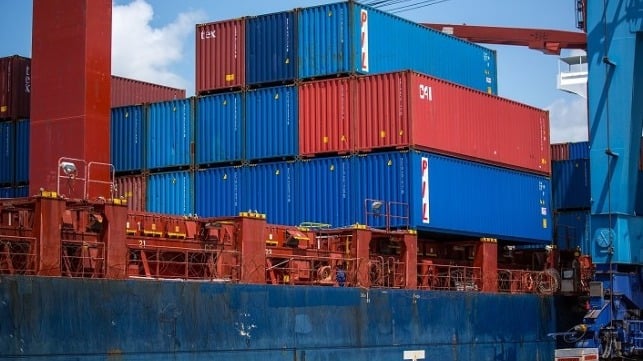 file photo_x000D_
file photo_x000D_
By MarEx 2018-11-15 18:14:14
_x000D_
A new study from the non-profit think tank Reason Foundation finds asset recycling via long -term leases of America’s largest existing toll roads, bridges, airports, seaports, water and wastewater facilities, and university parking systems could generate $720 billion to $885 billion for state and local governments to spend on new infrastructure projects.
_x000D_
Once a government has identified a list of suitable assets, infrastructure asset recycling has three interrelated components that promote a cycle of investment and renewal. The first element unlocks the trapped value of an existing infrastructure asset by leasing the asset to private investors through a long-term public-private partnership. The best candidates for these transactions are assets with an existing, self-generated revenue stream. The second component occurs when the government then “recycles” the proceeds from the transaction into new investments, ideally for other economically beneficial infrastructure. The third component occurs when the new assets mature and become good candidates for recycling.
_x000D_
“Asset recycling can help fix America’s serious infrastructure problems: aging, deteriorating facilities and a lack of funding for a large array of new infrastructure that would improve our quality of life,” said Robert Poole, director of transportation policy at Reason Foundation and author of the new report.
_x000D_
“The basic idea calls for long-term leasing of existing facilities to well-qualified private partners and ‘recycling’ the lease proceeds into new, but currently unfunded infrastructure projects. The company pays most or all of the annual lease payments upfront, and the government uses that money on its unfunded infrastructure needs. Arguably, no other tool holds as much promise in addressing America’s infrastructure deficit.”
_x000D_
The author estimated potential net lease proceeds from the 61 largest airports ($250 billion –$360 billion), the 42 largest toll systems ($175 billion–$230 billion), seaports ($50 billion), water/wastewater systems ($110 billion), and state university parking systems ($60 billion).
_x000D_
Indicating the nation’s ports could be leased for up to $50 billion, he states this would produce an estimated $9 billion in capital improvements over the first five years. The study concludes leasing the Port of Houston could yield net proceeds of between $1 billion and $ 1.7 billion and the Port of Tampa Bay could generate $272 million, after debt payoff.
_x000D_
The 42 largest existing toll roads and bridges could generate $175 billion to $230 billion in gross upfront lease payments for state and local owners and would prompt another $10 billion in improvements during the first five years, according to the study. The George Washington Bridge connecting New York and New Jersey could yield between $10 billion and $17 billion in net lease payments, after debt repayment. Leasing the Illinois Tollway system could generate between $11 and $20 billion and the Bay Area Toll Authority’s seven California-owned bridges could produce between $2 billion and $8 billion in net upfront lease payments.
_x000D_
Poole cites Australia as an example of his idea. Australia’s federal government was the first to implement a policy to encourage state and local governments to engage in infrastructure asset recycling. It offered those governments grants of up to 15 percent of the proceeds from leasing existing facilities if the state or local government committed to using those proceeds for new infrastructure. Four of Australia’s states and territories took part, realizing a net A$20 billion from leases of existing infrastructure and garnering an additional A$6 billion in federal incentive grants.
_x000D_
U.S. experience with infrastructure asset recycling is more limited. The purest example is the long-term public-private partnership lease of the Indiana Toll Road, which generated a $3.8 billion up-front lease payment. After paying off toll road bonds, the state funded a 10-year highway investment plan called Major Moves as well as creating a $500 million trust fund to maintain the new infrastructure.
_x000D_
source: www.maritime-executive.com
_x000D_


